“I *still* haven’t tried a Macaron. I think I’m broken… >_>
But can you settle an argument for me? Is there a difference between a macaron and a macaroon?”
This is a direct quote from my good friend Chris of Aussie on the Road and was left as a comment on my latest macaron post. First Chris, you’re not broken. It’s not even been a full year since I tasted my first macaron and life as I know it changed forever (more on that story in a hot second). It’s forgivable. However, we have to remedy this macaron-less life and get you to Zumbo’s ASAP.
Second, there is a MASSIVE difference between a macaron and a macaroon. I don’t fancy myself a true expert, and I’m not the first to write a blog post about the difference one “O” can make. But I do feel it’s my duty as the “No Macaron Left Behind” lady to answer your question and shed light on this very important (I’m not joking) issue.
Let’s begin our lesson into the difference between the macarOn and macarOOn through photos (none of which are taken by me, by the way, but all credited to their creative commons photographer).
Macaroon, often topped with a cherry, the photographer
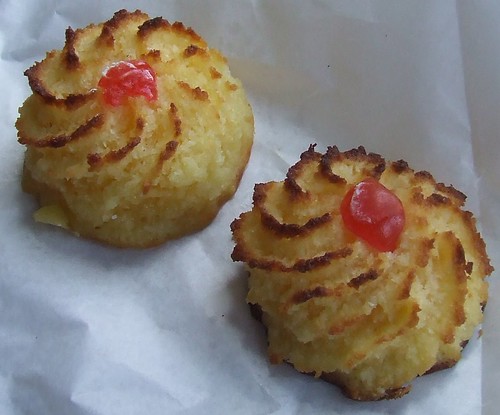
Macarons, a sandwich-like pastry, the photographer
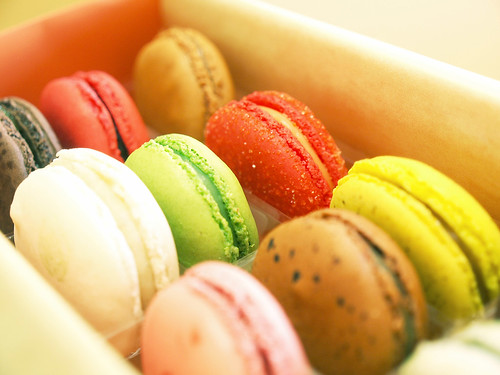
Macaroons, often dipped in chocolate, the photographer

Macarons come in a variety of colors and flavors, the photographer

Macaroon, plain and simple, the photographer

Macaron, shell + filling + shell, the photographer
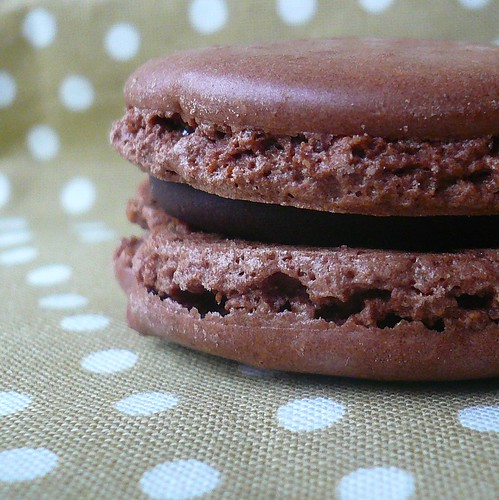
In addition to the clear differences in appearance, macarons and macaroons are made from different ingredients.
Both are meringue-based, but I believe that’s where the similarities end.
Macaron:
The shells are often made of egg whites, icing sugar, granulated sugar, almond powder or ground almond, and food coloring and usually filled with a flavored buttercream, ganache or jam.
Macaroon:
Macaroons also call for egg whites in addition to ground or powdered nuts (which I’ve never seen) or coconut (which apparently is the American way).
I saw (coconut) macaroons growing up but never saw a macaron until I walked through the doors of Adriano Zumbo’s Rozelle patisserie nearly one year ago. After three months of traveling around Australia, I arrived in Sydney, ready to find a flat and job for a few months. My new friend Adam asked if I’d ever tried a “macaroon”, and when I said no, he announced we were going straight to Zumbo’s. Adam loves his cakes, so I trusted his judgement, but I secretly wrinkled my nose at the thought of a coconut macaroon. “They come in so many colors and flavors,” he said enthusiastically. “Just wait and see!” So I decided to wait and see how tasty chocolate-dipped coconut could really be. When I entered the small shop, I was puzzled by the little round colorful cookies/biscuits/pastries of joy. Where was the shredded coconut? They didn’t look a thing like I expected. Thankfully they didn’t taste a thing like what I expected either — they were so much better!
Spelling and pronunciation differences
Some people say that both can be spelled with two O’s and that the French spelling with one O is often used to differentiate the two. Whether that’s true or not, I always spell them differently. That hasn’t stopped some pastry chefs from labeling them both macarOOn, however.
I’ve always pronounced the “oo” in “macarOOn” the same way I do the O’s in “broom” or “room”.
After hearing several people in-the-know pronounce the last syllable in “macarOn” like the name “Ron”, I adopted it. Some employees at Zumbo say it like me, and a few pronounce it like it rhymes with the vowels in “room”. I like to think me and the other “Ron’s” out there are correct O:-)
I hope this helps shed a little light on the macaron vs macaroon question, Chris (and all my macaron mission followers — again, BLESS YOU)!.
I have to end with a little blog love to a few posts I found while writing this post that had funny images or additional insights:
Macaron/Macaroon — Let’s Call the Whole Thing Off
They are macarons…right?
Macarons vs Macaroons
Oh yeah, and one more macarOn photo!

Featured image via creative commons



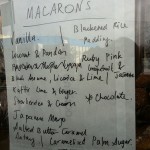
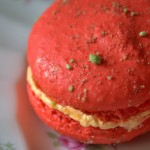
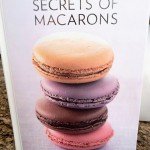

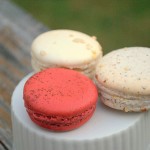



 Twitter Updates
Twitter Updates
It was a question that interested me so I did google it once! I’ve been gone from Sydney a while now, and it seems like Macarons are one of the biggest changes – I could only get them at the Lindt cafe before. I’m SO looking forward to trying them on my next visit.
Thanks Claire! I had a couple from the Lindt cafe — they were very nice as well! Hope you get to return to Sydney because if you do, a visit (or two or three) to Zumbo’s is a must!
Growing up I wouldn’t of known what a macaron was if the delightful flying disk hit me in the head. Macaroons on the other hand were in nearly every bakery in Australia. Fantastic article.
Thanks for checking out the post, Sara 🙂 As you can tell, I’m pretty passionate about macarons O:-)
We should launch a campaign to get the Macaron recognized, the first place to start is with the people that maintain the spell checker databases.
Just because I’ve spent ages arguing with the spell checker and it still insists in calling them macaroons! Yes we can manually add the spelling, but we shouldn’t have to.
The next step is marketing, the best way to do that is to give people a fun way to enjoy and remember them. I think the best way do that is to market the ‘No Macaron Left Behind’ challenge. Lets make this event global, lets get annual conventions in different countries.
Heather, as the figurehead of this challenge, you would have to spend time traveling in these countries. As the spokesperson you would launch each convention.
I can see this coming together, come on people let the Macaron be heard!
Gav, I think I need you to be my campaign manager if I ever run for office. Thank you for your devotion to my mission.
Great post, Heather! I recently watched a clip of a past season of Masterchef Australia in which Adriano Zumbo challenged the contestants to make a macaron tower . . . & he referred to them as “macaroons!” Now I don’t know what to think about the proper pronunciation – so confusing!! 🙁 I guess everyone has their own preferences, but I like using macaron to distinguish from the coconut macaroon variety. 🙂
Thanks Nicole! I read several articles about Masterchef and the pronunciation — I don’t get it! If I ever get to talk to Zumbo (yeah right), I will get to the bottom of this issue!
They are just so pretty. A parent brought some for the teachers at my school a few weeks ago, and I almost didn’t want to eat it. But of course I did.
Brooke, do you remember the flavors? The textures have been different every where I’ve done, and I’m curious if I’ll ever find a place as good as Zumbo’s O:-) Can’t wait for you to try them next year and make me jealous 🙂
1st wow great freaking photos of them. I think Macaroons are so photogenic,. I love the color and texter. As for the difference between the two I had no clue about that. I would just eat it like i do most of my food with out actually thinking about it and just tasting every delicious second of it. I love your devotion to Macarons. ;)~
Aren’t they beautiful photos, Jaime?! I have to hand it to the photographers. I knew my photos wouldn’t be enough for this post so Flickr Creative Commons came to the rescue.
When we know we’re going to meet, I’ll begin planning a food adventure for us 🙂
No offense, but I thought the macaron posts were finished, and now you have me drooling all over again!! Do you think we could make these? I have no idea how difficult they are but I think it’d be fun 😉
Laura, they’re supposed to be pretty tricky to make the first few times, but I’m ready to try this fall. Next time our paths cross, let’s do it! Hmm, do you have time to stop in VA on the road trip?!
Thank you so much for this explanation. I was really wondering the same thing. Well, now that I know that they are completely different, I MUST try the macaron!
Erica, I wish I could host a party where all of the lovely tweeps I adore could gather together for a evening of food, drink, and of course macarons.
I’m sure that I’ve spelled it wrong a million times! I never knew that they were two different things. Though I’ve had both, I just didn’t know the name of the second.
Of course I’m drooling over this post. Imagining biting into one with that indescribable texture…mmmmmm.
Kyle, it’s amazing that I’d never seen or heard of a macaron until last year! Now I seem to hear about them all the time 🙂
If a wedding brings you back to Richmond soon, we HAVE to meet and I’ll find a place with macarons.
I’ll take 1 Macaron & 1 Macaroon…PLEASE! Those photos are making my mouth water! And thanks for clearing up the differences.
Annette, I drooled when I saw these photos on Flick Creative Commons. Thank goodness for people who are much more talented than me! And you’re very welcome 🙂
either way, both of them look delicious. i’ve never seen a macaroon with nuts. and i’ve never had a macaron, but i’m guessing they’re like soft oreos.
I guess thinking of them as soft Oreos is as close a comparison as you can get to something else but they are SO MUCH MORE 🙂
oh, man… now the can of worms have been opened, and i’m going to look online for macarons. maybe order some or make some…
yum yum yum! so they’re both gluten free? Or do you have to ask before you bit into them?
In general they should be gluten free, but I think you should probably ask to be sure! It’s possible that the filling could contain something with gluten. Zumbo once made a hamburger flavored macaron by soaking burgers in cream for several days for the flavors to infuse. While there was no bun in the cream, the flavors from the bun were in there and if someone has a total gluten intolerance, I’m guessing that could potentially be an issue.
Yummy post!!
Not a big fan of the double o variety, maybe they’ll make a come back one day…
I like coconut but I’m not always a fan of shredded coconut!
This probably what barter vs bargain is to the travel blogging community. Bound to give people something to argue over for years. I’m with you on the single O variety! And besides, you can act as if you know more if you say “macaron”!
I like to think that it makes you sound “in the know” 🙂
I’m going to make Chris take me with him to Zumbo’s! I never knew or really though of the difference either! I have to say that the Macarons I tried in Seattle weren’t that impressive, I’m hoping it was the place though because I have high hopes for Zumbo!
I need a full report after your Zumbo expedition! He creates new flavors all the time so I bet you’ll have one I haven’t!
great post!
Hi,
Just wondering if there’s anything in the fact that Macarons are French whereas Macaroons are Scottish, so perhaps when “Those who should know’ are saying “Macaroon” perhaps the spelling of what they’re saying is the french ‘Macaron’. Does that make any sense? So perhaps in France Macarons are pronounced Macaroons; I guess I will find out when I visit Paris this July and do my Macarons baking class 🙂
I’m curious to know too — let us know what you experience this summer!
Anita, “macaron” is French pronounciation. Macaroon is just American :]
I also wondered about the pronounciation, so I just googled it. The search turned up a couple of what seemed to be authoritative sites that cater to English-speaking audience and they both pronounce it as something close to “mahk-eh-roh”, with no emphasis on any syllable. Yes, that last “n” is silent. This reminded me of how various people pronounced the word “Amish”, with the ones pronouncing it as “eh-mish” sounding uneducated. So, with that experience in mind, I prefer to pronounce macaron as “mahk-eh-roh”.
I had them in two different places so far, New York City and Tokyo, and they both were very similar in texture and were very delicious. The cookie parts in both cities were soft and very delicate, almost crumbly when touched, and they almost instantly melted in my mouth when I bit into them. The fillings were also similar, mostly cream or butter-based, but there were also some jellies. The main differences were in flavors, with each city offering its own unique selections. Tokyo was the only city where I found green tea flavored macarons, which were interesting (I’m actually not a big fan of green tea flavor in anything, but green tea is big in Japan, so I had to try it.). Anyway, I highly recommend that everyone try macarons anywhere they can find them, whenever they get the chance.
Yeah, they are pronounced completely differently. English people could rhyme macaron with Ron, but in french it sounds more like oh- with a nasal sound at the end, like the comical impersonation of a laughing french man (hon hon hon).
A ha ha – my sister must be embroiled in a debate about this very topic as she travels in France with a few mates, cos she has shared your post on her FB as the definitive answer!
You have certainly cleared it up for me!
Heather, thanks for clearing this up! I was even more excited to find out that you were in Sydney for a year and know about a lot of my old haunts, plus you’ve been a London visitor (my new haunt). Hope you keep up the macaron magic, and love your blog x
Kate, thanks for checking out the post! I see in a recent post on your blog that you just made macarons — and they look great 🙂
I have been looking for these cokieos since I was a kid. A bakery called Guentert’s that my family would frequent in the 80s had these cokieos, they were my absolute favorite. Unfortunately the bakery closed down and I have not been able to find this recipe anywhere. At least now I know that someone else is making them! Thanks.
I’ve never liked macarOOns much – but now I’m virtually panting to try a macarOn – they look WONDERFUL … Y U M !
Hi,
Well here in So California any good Persian store has macarons because they still have a lot of the French in their culture (from the old days).
Jews (everywhere on the planet) are most particularly recognized for Macaroons which are a delightful feature of most Jewish holiday meals. I prefer the macaroons probably because I grew up in a Jewish neighborhood and we ate ’em all the time. Macarons are okay, just a tad too sweet. Thanks for the clarification.
I do love amaretti, as well. It’s essentially an Italian recipe…
The earliest recorded macaroon recipes are for the almond meringue variety similar to amaretti, with a crisp crust and a softer interior. They were made from egg whites and almond paste. Mrs Beeton’s Book of Household Management gives a recipe for a macaroon of this kind.
The name of the cookie comes from an Italian word meaning paste, maccarone. About the origin, culinary historians claim that macaroons can be traced to an Italian monastery of the 9th century. The monks came to France in 1533, joined by the pastry chefs of Catherine de Medici, wife of King Henri II. Later, two Benedictine nuns, Sister Marguerite and Sister Marie-Elisabeth, came to Nancy seeking asylum during the French Revolution. The two women paid for their housing by baking and selling macaroon cookies, and thus became known as the “Macaroon Sisters”. Recipes for macaroons (also spelled “mackaroon,” “maccaroon” and “mackaroom”) appear in recipe books at least as early as 1725 (Robert Smith’s Court Cookery, or the Complete English Cook).
Italian Jews later adopted the cookie because it has no flour or leavening (macaroons are leavened by egg whites) and can be enjoyed during the eight-day observation of Passover. It was introduced to other European Jews and became popular as a year-round sweet. Over time, coconut was added to the ground almonds and, in certain recipes, replaced them. Potato starch is also sometimes included in the recipe, to give the macaroons more body.
Their is no argument/ According to The Oxford English, the definitive source for correct spelling and pronunciation,a MacarOOn is a light (two sided) biscuit made with egg white, sugar with ground almonds or coconut filling. The word MacarOn is the French spelling of MacarOON, in other words the two words are for the same item…..no augument
Thanks for the clarification, but when I was in Italy the Macarons were different still.
This is what I thought too! However I was watching Masterchef the other day and they called the macarons macaroons…